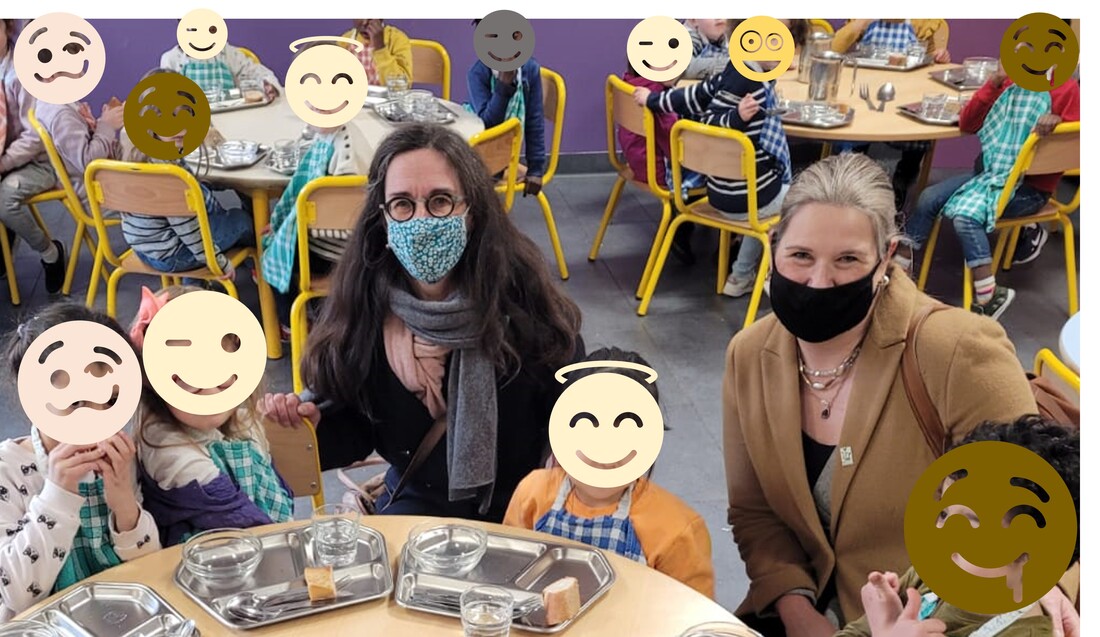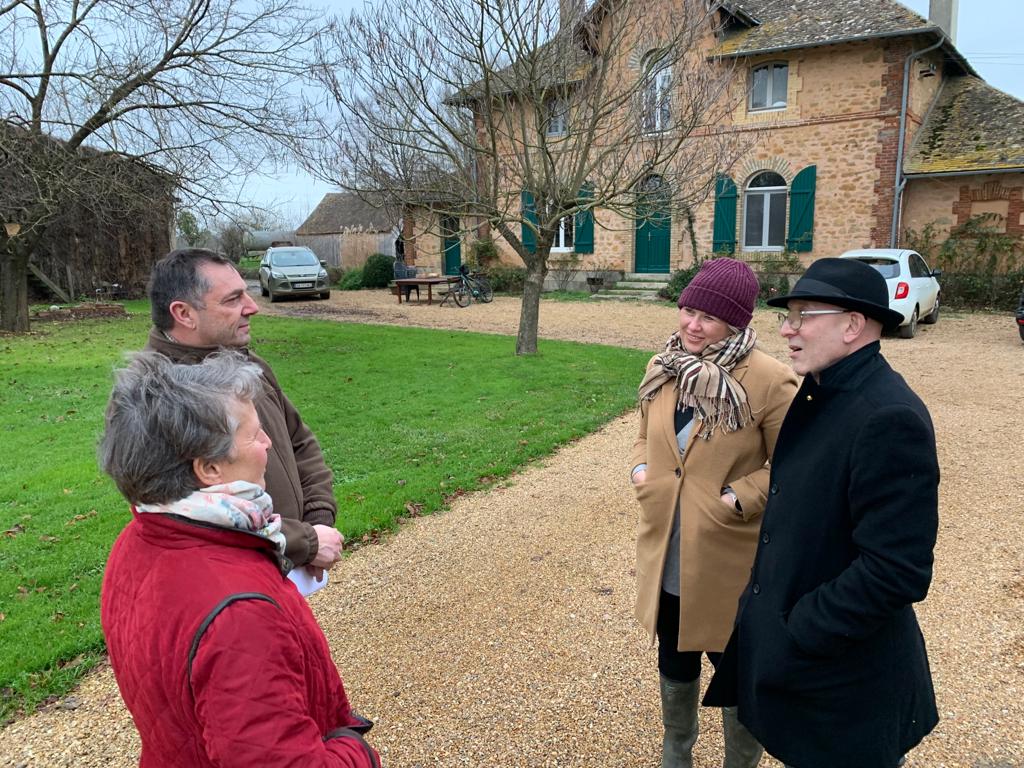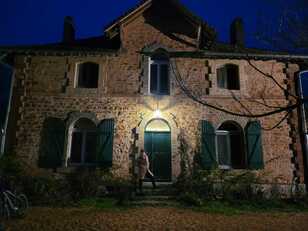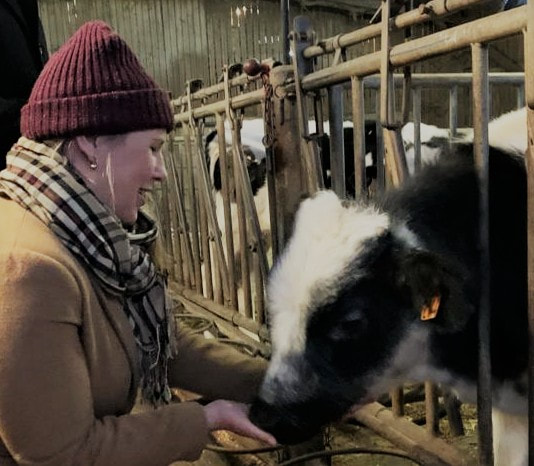| I started today meeting representatives from the Ministries of Agriculture and of European and Foreign Affairs. Aside from enjoying the great city views from their meeting rooms, it was also a good way to check my thoughts about what I’ve learned so far from my week in France. Both departments gave me more insight into specific details in the areas of climate and agricultural policy, which I’m hoping will develop into some kind of lessons Ireland can learn from the French experience. |
| For lunch, I joined the Mayor of Paris’ 12th district, Mrs. Emmanuelle Pierre-Marie, at a local primary school. Mayor Pierre-Marie is a recently elected Green Party member bursting with passion and energy. I particularly enjoyed our lunchtime discussion about how she plans to transform her district over the next five years to make it more pedestrian friendly. |
| After that dose of inspiration from my school dinner, I headed from "fork to farm" 200km west of Paris to the Pays de la Loire region of France to visit a 150 hectare dairy farm that is part of France’s Low Carbon Farm Initiative. Part of me felt that this might be a bit of an oxymoron because cows can’t help but emit lots of carbon, but after several hours exploring every nook and cranny of Ghislain and Charlotte de Viron’s Low Carbon Farm, I’m convinced. |
While just 25% of dairy farms are part of the Low Carbon Farm Initiative now, Cniel aims to increase this to 50% by 2025. They stress that all the actions they encourage farmers to take to become low carbon actually improve the profits of the farms in addition to lowering greenhouse gas emissions. Ghislain confirmed that his profits continue to increase as he applies low carbon practices due in large part to reduced input costs. All agreed that their main obstacles to getting other farmers to join the initiative were related to farmers already being too overworked to have the time to reflect and engage on the topic; the initial cost of getting an on farm assessment (approximately 800 euro); and the challenge of communicating the benefits of low carbon farming to farmers. These all seem like obstacles that are easily overcome and make me feel confident they will reach their targets within this decade.
| As night fell in the Sarthe, I said good bye to new farming friends feeling hopeful and grateful that there were farmers like Ghislain and Charlotte in the world who recognize their role as “climate solvers”. The truth is, we can have all these nice things from school dinners to low(er) carbon farms, if we think they are important enough to keep asking for them. |






 RSS Feed
RSS Feed
